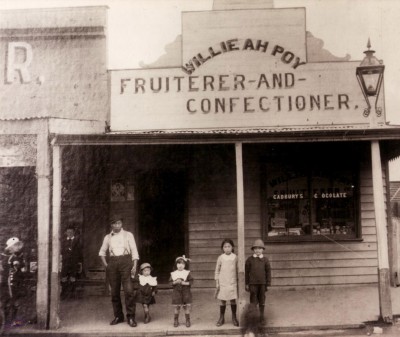In the mid to late nineteenth century a combination of powerful push and pull factors led to an unprecedented rise in Chinese migration to other parts of Asia, the Americas and Australia. The principal source of migrants was Guangdong (Kwangtung) Province in southern China, in the south west of the province and areas abutting the principal city, Guangzhou (Canton), and Hong Kong. Although the province was enormously fertile and productive, it had an extraordinary population density and often difficult living conditions. It had been exposed to outside influences through trade and commerce for many centuries and was notorious for its independence. In the nineteenth century the province was beset with a succession of highly disruptive events such as the Taiping rebellion and its fierce suppression, uprisings by clan and secret society members, feuds and the Opium Wars.
Most of the resulting new migrants entered the Australian colonies in large groups on the credit-ticket system. They were sponsored by merchants in Hong Kong and Australia or family and clan, to whom they were indebted for their passage. After their arrival, headmen or bosses, in association with fraternal organisations such as native place associations or secret societies, monitored them until their debt was paid. They were a highly motivated people for whom going to America and Australia was a rational choice, particularly during the gold rushes.
In the Riverina the Chinese presence gathered pace with the waning of the gold rushes and the spread of settlement, farming and pastoralism further west. It is the size of this population shift, the concentration of the Chinese men in agricultural and pastoral industries rather than gold mining, and the length of time they stayed in the region that make the Riverina experience so significant. Meaningful population figures are difficult to obtain, for the peak numbers did not coincide with the Census dates, but by 1883 the Chinese population was probably about 2200. And this figure may have been an understatement, for it was a moving population, with many men shifting between the towns and pastoral stations. These numbers may not seem large, but it must be remembered that this was rural and outback Australia, not Melbourne or Sydney, or for that matter, Bendigo or Ballarat.
It was a predominantly male population and the Chinese men were a very large proportion of the adult males in the Riverina towns, in some instances up to half. Today, few physical vestiges of their places of residence are left and their history has been largely forgotten or lost, despite the many families in the Riverina descended from these early pioneers. It is this history and heritage that this exhibition seeks to highlight. In so doing the race issue has not been forgotten, for the Chinese people were not exactly welcomed into Australia and often reminded of their allegedly ‘inferior’ status in the press. Far removed from their kith and kin and the mostly verdant fields and abundant streams of their native Guangdong Province the Riverina story is one of success; the triumph of an alien people in an alien land. That so many survived, and in many instances thrived, is an example to all Australians: a tribute to the power of the human spirit.

